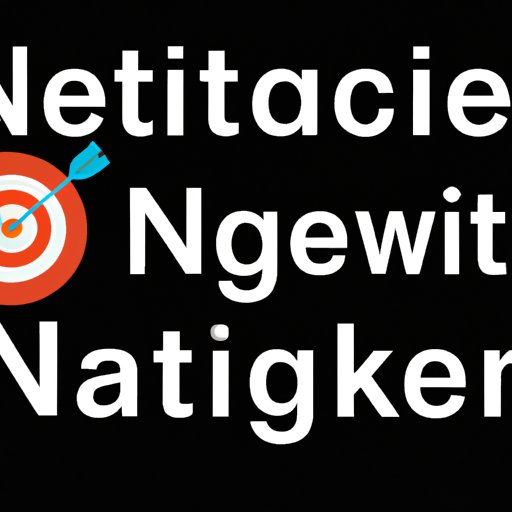Introduction
Product market fit (PMF) is the process of identifying and fulfilling customer needs in the marketplace. It is an important step in launching a successful product or service that meets the demands of your target audience. By understanding how to find product market fit, you can ensure that your product will be well-received by customers and have a greater chance of success.
The challenge of finding PMF lies in the fact that it requires extensive research and testing. You must understand who your target audience is, what their needs are, and how you can best fulfill those needs. Additionally, you must analyze your competitors and understand what strategies they are using to remain competitive. Furthermore, you must collect and respond to customer feedback to ensure that your product is meeting customer expectations. Finally, you must track relevant metrics to monitor the performance of your product in the marketplace.

Identifying Your Target Audience and Niche
Before you can find product market fit, you must first identify your target audience and niche. This involves researching your ideal customer and defining your niche.
Researching Your Ideal Customer
In order to identify your ideal customer, you must first conduct market research. This involves gathering data on your target audience to better understand their needs, wants, and preferences. Gathering customer data can help you create a customer profile that includes demographic information such as age, gender, income level, and location. Additionally, you should consider psychographic information such as lifestyle, values, and interests. This data can help you better understand your target audience and tailor your product or service to meet their needs.
Defining Your Niche
Once you have identified your target audience, you must define your niche. This means determining who your competitors are and how you can differentiate yourself from them. By understanding your niche, you can create a unique offering that sets you apart from the competition and appeals to your target audience. This can help you stand out in the market and increase your chances of finding PMF.
Analyzing Your Competitors
In addition to identifying your target audience and niche, you must also analyze your competitors. This involves identifying who your competitors are and examining their strategies.
Identifying Competitors
The first step to analyzing your competitors is to identify who they are. This can be done by researching the industry and looking for companies that offer similar products or services. Once you have identified your competitors, you can begin to examine their strategies.
Examining Their Strategies
When examining your competitors’ strategies, you should focus on their pricing, marketing, and customer service. By understanding their approach, you can identify areas where you can differentiate yourself and better appeal to your target audience. Additionally, you should consider their strengths and weaknesses and how you can capitalize on them.
Responding to Customer Feedback
Customer feedback is essential for finding product market fit. It provides valuable insight into how customers perceive your product or service and can help you make necessary improvements. As such, it is important to collect and respond to customer feedback.
Collecting Customer Feedback
The first step to responding to customer feedback is to collect it. This can be done through surveys, interviews, focus groups, and online reviews. By collecting feedback from customers, you can gain a better understanding of their experience with your product or service and use it to make improvements.
Utilizing Customer Feedback
Once you have collected customer feedback, you must utilize it. This involves analyzing the feedback and making changes to your product or service as needed. Additionally, you should consider creating an action plan to address customer concerns and ensure that they are addressed in a timely manner. Utilizing customer feedback can help you make necessary improvements and ensure that your product is meeting customer expectations.

Utilizing Focus Groups for Validation
In addition to responding to customer feedback, you can also utilize focus groups for validation. Focus groups provide an opportunity to gather feedback from potential customers and validate your product before launch.
Benefits of Focus Groups
Focus groups provide several benefits. They allow you to get direct feedback from potential customers and gain valuable insights into their experience with your product or service. Additionally, focus groups provide an opportunity to test different versions of your product and determine which one is most effective. Finally, focus groups can help you identify any potential issues with your product before launch.
Planning and Executing a Focus Group
When planning and executing a focus group, it is important to consider the size of the group, the duration of the session, and the topics of discussion. Additionally, you should ensure that the group consists of individuals who are representative of your target audience. Finally, it is important to create an agenda and structure the session to ensure that you get the most out of the discussion.
Testing Your Product with Early Adopters
Testing your product with early adopters is another important step in finding product market fit. Early adopters are individuals who are willing to try out new products and provide feedback. Testing your product with early adopters can help you identify any potential issues before launch and ensure that your product meets customer expectations.
Identifying Early Adopters
The first step to testing your product with early adopters is to identify who they are. This can be done by researching the industry and looking for individuals who have expressed interest in similar products or services. Additionally, you can reach out to influencers or industry experts who may be willing to try out your product.
Reaching Out to Early Adopters
Once you have identified your early adopters, you must reach out to them. This involves crafting a compelling message that explains why they should try out your product and how it can benefit them. Additionally, you should consider offering incentives such as discounts or free products to encourage early adoption.

Tracking Metrics to Monitor Performance
Finally, tracking metrics is essential for monitoring the performance of your product in the marketplace. This involves identifying important metrics and monitoring them on an ongoing basis.
Identifying Important Metrics
When identifying important metrics, you should focus on metrics that measure customer engagement and satisfaction. These include metrics such as customer churn rate, customer lifetime value, and net promoter score. Additionally, you should consider other metrics such as website traffic, conversion rate, and cost per acquisition.
Monitoring Performance
Once you have identified important metrics, you must monitor them on an ongoing basis. This involves regularly reviewing data to identify trends and opportunities for improvement. Additionally, you should consider setting goals and benchmarks to ensure that you are making progress towards finding product market fit.
Conclusion
Finding product market fit is essential for a successful product launch. This involves identifying your target audience and niche, analyzing your competitors, responding to customer feedback, utilizing focus groups for validation, testing your product with early adopters, and tracking metrics to monitor performance. By understanding and following these steps, you can ensure that your product will be well-received by customers and have a greater chance of success.
(Note: Is this article not meeting your expectations? Do you have knowledge or insights to share? Unlock new opportunities and expand your reach by joining our authors team. Click Registration to join us and share your expertise with our readers.)
